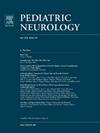Acupuncture for Prevention of Primary Headaches in Children and Adolescents: A Literature Overview for the Pediatric Neurologist
IF 3.2
3区 医学
Q2 CLINICAL NEUROLOGY
引用次数: 0
Abstract
Background
To deepen the role of acupuncture as preventive treatment for pediatric primary headaches in children and adolescents and to understand if acupuncture is more effective than sham acupuncture or pharmacologic preventive treatment, acupuncture tolerability, and beneficial effect on psychiatric comorbidities.
Methods
A critical literature review was performed. Following PRISMA guidelines, all reports published (PubMed, 1982-2023) were considered. PICOS method was applied for paper selection. Efficacy measures were reduction of headache frequency, duration, and intensity compared with baseline, and, if available, with a control group. We also aimed to describe treatment protocols, the reason for choosing this treatment, patients' perception of acupuncture experience, and acupuncture's impact on headache comorbidity and general functioning.
Results
Five of 90 papers were selected, corresponding to a population of 229 children/adolescents (zero to 21 years). Among these, two controlled studies evaluated reduction of headache frequency, intensity, and duration.
True acupuncture versus placebo significantly reduced headache frequency (reduction of seven to eight headache days/month versus zero to one headache days/month, respectively), intensity on a visual analog scale (5.4 points compared with 1.6 points in placebo group), and headache duration. Tolerability data on acupuncture were favorable. Acupuncture experience was positively perceived by most patients, improved pain-related total interference in functioning, and reduced anxiety levels.
Conclusions
The few studies dealing with acupuncture as preventive treatment of pediatric primary headaches, despite their methodologic limitations, highlighted its efficacy. Further detailed studies are needed.
针灸预防儿童和青少年原发性头痛:儿科神经科文献综述
背景:加深针刺在儿童和青少年原发性头痛预防治疗中的作用,了解针刺是否比假针或药物预防治疗更有效,针刺耐受性,以及对精神合并症的有益影响。方法回顾性分析相关文献。遵循PRISMA指南,所有已发表的报告(PubMed, 1982-2023)均被考虑。论文选择采用PICOS方法。疗效测量是与基线相比头痛频率、持续时间和强度的减少,如果有的话,与对照组比较。我们还旨在描述治疗方案,选择这种治疗的原因,患者对针灸体验的感知,以及针灸对头痛合并症和全身功能的影响。结果从90篇论文中筛选出5篇,对应于229名儿童/青少年(0 - 21岁)。其中,两项对照研究评估了头痛频率、强度和持续时间的减少。与安慰剂相比,真正的针灸显著减少了头痛的频率(减少7 - 8个头痛日/月,分别为0 - 1个头痛日/月),视觉模拟量表的强度(5.4分,安慰剂组为1.6分)和头痛持续时间。针刺的耐受性数据是有利的。针刺体验被大多数患者积极感知,改善疼痛相关的功能干扰,降低焦虑水平。结论尽管有方法学上的局限性,但很少有研究将针灸作为儿童原发性头痛的预防治疗方法,强调了针灸的疗效。需要进一步的详细研究。
本文章由计算机程序翻译,如有差异,请以英文原文为准。
求助全文
约1分钟内获得全文
求助全文
来源期刊

Pediatric neurology
医学-临床神经学
CiteScore
4.80
自引率
2.60%
发文量
176
审稿时长
78 days
期刊介绍:
Pediatric Neurology publishes timely peer-reviewed clinical and research articles covering all aspects of the developing nervous system.
Pediatric Neurology features up-to-the-minute publication of the latest advances in the diagnosis, management, and treatment of pediatric neurologic disorders. The journal''s editor, E. Steve Roach, in conjunction with the team of Associate Editors, heads an internationally recognized editorial board, ensuring the most authoritative and extensive coverage of the field. Among the topics covered are: epilepsy, mitochondrial diseases, congenital malformations, chromosomopathies, peripheral neuropathies, perinatal and childhood stroke, cerebral palsy, as well as other diseases affecting the developing nervous system.
 求助内容:
求助内容: 应助结果提醒方式:
应助结果提醒方式:


